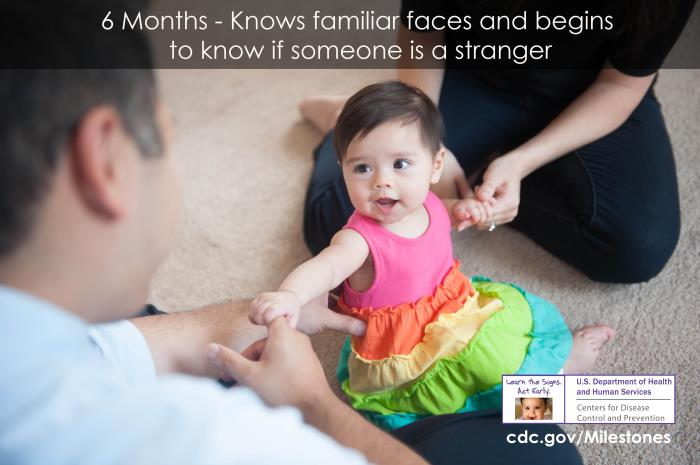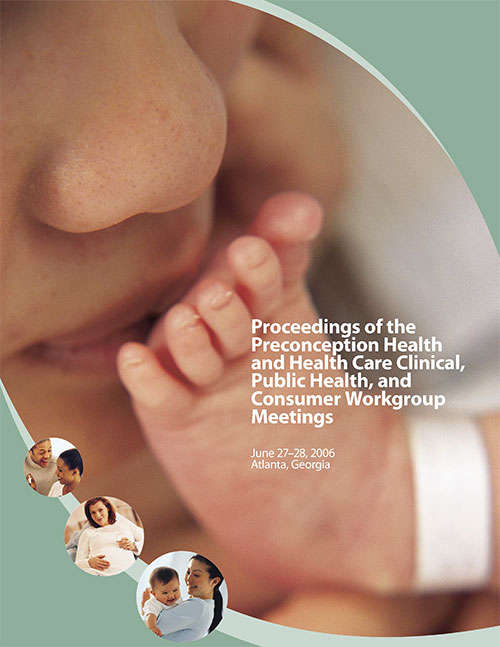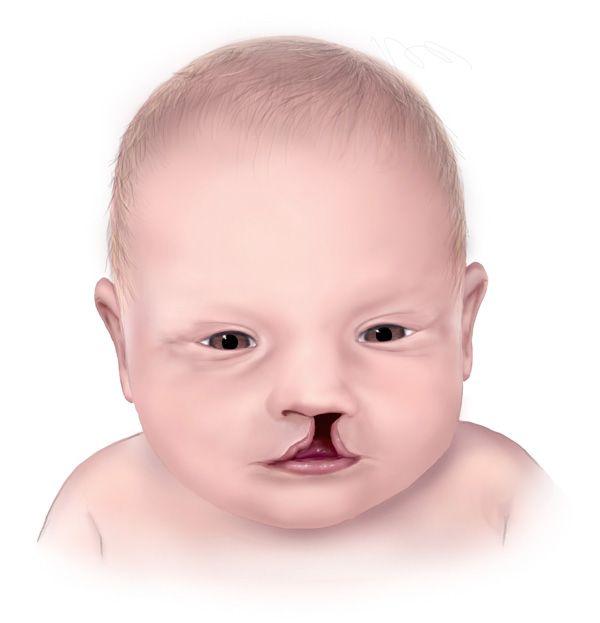Our History
- Timelineicon

2000
- The Children’s Health Act of 2000 passed by Congress and signed into law by former President Clinton, required the establishment of the National Center on Birth Defects and Developmental Disabilities at CDC.
- The National Hemophilia Foundation’s (NHF) National Prevention Program, Do the 5!, is established to help people with bleeding disorders prevent or reduce the complications of these disorders.
- CDC organizes the Autism and Developmental Disabilities Monitoring (ADDM) Network, a surveillance program to collect data for determining prevalence of autism spectrum disorders and other developmental disabilities at multiple sites across the United States.
- CDC develops and launches a single topic area, Disability and Secondary Conditions, with 13 overarching objectives within the Healthy People 2010 (HP 2010) plan. Of the 467 objectives, 88 (18.8%) reported data for people with disabilities.
- Timelineicon

2001
- The National Center on Birth Defects and Developmental Disabilities (NCBDDD) becomes operational.
- Dr. Jose Cordero is named director of NCBDDD.
- CDC establishes the Centers for Autism and Developmental Disabilities Research and Epidemiology (CADDRE) Network to conduct epidemiologic research related to autism spectrum disorder and other developmental disabilities.

- Under the 2001 Muscular Dystrophy Community Assistance, Research, and Education Amendments (also known as the MD-CARE Act), Congress authorizes NCBDDD to establish the Muscular Dystrophy Surveillance, Tracking, and Research Network (MD STARnet), the only multi-site, population-based surveillance network in the United States. From this program’s data, more than 45 papers have been published providing important public health and clinical knowledge for Duchenne muscular dystrophy. The program has expanded and now covers eight types of muscular dystrophy.
- Congress mandates the inclusion of issues related to children’s neurobehavioral disorders, including attention-deficit/hyperactivity disorder (ADHD) into NCBDDD’s research agenda. Tourette syndrome was added to this group of disorders in 2004.
- NCBDDD publishes, in the Journal of the American Medical Association (JAMA), the first evaluation showing that folic acid fortification has reduced the prevalence of neural tube defects in the United States.
- Timelineicon

2002
- The Division of Blood Disorders joins NCBDDD.
- CDC funds Special Olympics, a community of athletes with intellectual disabilities (IDs), coaches, and volunteers dedicated to sparking nationwide change. Since funding began in 2002, CDC and Special Olympics have worked with more than 200 partners to prevent injuries, illnesses, and premature deaths of people with IDs by improving equitable access to quality health care, education, and services.
- NCBDDD releases, in Morbidity and Mortality Weekly Report (MMWR), its first multi-state, population-based report on the prevalence estimate of fetal alcohol syndrome in Alaska, Arizona, Colorado, and New York based on the Fetal Alcohol Syndrome Surveillance Network case definition and methodology.
- NCBDDD and FDA carry out investigations to learn more about an association between cochlear implants and bacterial meningitis among children. As a result, vaccination recommendations for the pneumococcal vaccine are changed to include cochlear implant recipients as a population at high risk for bacterial meningitis.
- Timelineicon

2003
- NCBDDD publishes a study in Pediatrics linking maternal obesity to multiple birth defects, adding more evidence to the pre-established link between maternal obesity and spina bifida.
- NCBDDD, in partnership with the American Academy of Pediatrics, issues the AUTISM A.L.A.R.M. Guidelines after prevalence studies confirmed that more children with autism spectrum disorder were being identified than had been in the past. The goal of AUTISM A.L.A.R.M. is to ensure that all children receive routine and appropriate screenings and timely intervention.
- Per NCBDDD recommendation, two core items are added to the Behavioral Risk Factor Surveillance System (BRFSS), a survey that collects health-related state data on U.S. residents. These two core items, relating to activity limitation (due to physical, mental, or emotional problems) and use of special equipment (cane, wheelchair, bed, telephone), were added to the BRFSS to identify people with disabilities in all states using the survey.
- An assessment of data from CDC’s Universal Data Collection (UDC) system, published in Morbidity and Mortality Weekly Report (MMWR), demonstrates that since 1998, no new infections of hepatitis A, B, and C or HIV have been linked to blood products used to treat hemophilia.
- FDA (2003) and the European Medicines Agency (EMA) (2005) meetings determine the critical need for inhibitor data to assess product safety.
- Timelineicon

2004
- Results from a CDC study, published in Transfusion, show that children younger than 7 years old who are using plasma-based treatment products are at increased risk of parvovirus infection. These results led to improvements in the safety of hemophilia treatment products made from plasma.
- CDC creates the Thalassemia Data and Blood Specimen Collection Project to quickly find known and developing infections that might spread through blood transfusion and be a potential threat to high-risk thalassemia patients.
- Results of a CDC survey of women with von Willebrand disease (VWD), published in Haemophilia, find that there is an average of 16 years between the onset of symptoms and diagnosis of a bleeding disorder, pointing to the need for timely referral by gynecologists and other providers to a Hemophilia Treatment Center (HTC) and specialty testing by trained lab personnel to ensure proper diagnosis and treatment.
- NCBDDD concludes its investigation into the association between cochlear implants and bacterial meningitis among children, showing that a particular cochlear implant is associated with bacterial meningitis. The findings, which were published in the New England Journal of Medicine, were subsequently awarded the Charles C. Shepard Award.

- NCBDDD launches the Learn the Signs. Act Early. campaign to improve early identification of autism and other developmental disabilities by promoting developmental monitoring of children ages 2 months to 5 years, so children and their families can get the services and support they need. The campaign has helped millions of people—parents, healthcare providers, and early childhood educators—track children’s development with milestone checklists in the Milestone Tracker app, on paper, and online.
- CDC establishes a health education outreach program for children with attention-deficit/hyperactivity disorder (ADHD) or Tourette syndrome to address documented gaps in knowledge, increase awareness of these conditions among health professionals and educators, and provide evidence-based health information for children living with these conditions. Outreach is done through a variety of means, including brochures, toolkits, web materials, workshops, and conference exhibits.
- NCBDDD, in collaboration with the National Task Force on Fetal Alcohol Syndrome and Fetal Alcohol Effect and with endorsement from partners, publishes updated criteria for fetal alcohol syndrome referral and diagnosis.
- NCBDDD releases the first data from the National Birth Defects Prevention Study to collaborators, beginning a series of analyses of one of the largest birth defects studies ever undertaken in the United States.
- Timelineicon

2005
- The U.S. Surgeon General, Vice Admiral Richard H. Carmona, MD, MPH, FACS, releases the updated “2005 Advisory on Alcohol Use in Pregnancy,” highlighting the importance of not drinking alcohol if pregnant or considering becoming pregnant. This advisory was reissued (updated from 1981) as recommended by the National Task Force on Fetal Alcohol Syndrome and Fetal Alcohol Effect.
- CDC co-authors the first-ever U.S. Surgeon General’s Call to Action to Improve the Health and Wellness of Persons with Disabilities, highlighting disability as a major public health issue. To help increase the quality of life for people with disabilities through better health care and understanding, the Surgeon General published a companion “People’s Piece” specifically written for the American people, entitled The 2005 Surgeon General’s Call to Action – To Improve the Health and Wellness of Persons with Disabilities (People’s Piece).
- NCBDDD publishes data on attention-deficit/hyperactivity disorder (ADHD) prevalence and treatment in Morbidity and Mortality Weekly Report (MMWR). Entitled “Mental Health in the United States: Prevalence of Diagnosis and Medication Treatment for Attention-Deficit/Hyperactivity Disorder — United States, 2003,” this was the first study to provide national and state prevalence data on ADHD, thus documenting the burden of ADHD.
- Timelineicon

2006
- Dr. Edwin Trevathan is named director of NCBDDD.
- A 2006 Spina Bifida Association assessment identifies wide variation in care across spina bifida clinics. Congressional language stated: “The increase provided for the National Spina Bifida Program in fiscal year 2010 shall be used to support the implementation of the National Spina Bifida Patient Registry to improve the efficiency and quality of care in the Nation‘s spina bifida clinics.“ As such, the National Spina Bifida Patient Registry (NSBPR) is established to identify and disseminate best practices and promote more uniform care across clinics.
- CDC funds and implements the Study to Explore Early Development (SEED), a multi-year, multi-site study. SEED is currently the largest study of children with autism in the United States. The goals of SEED are to identify factors that may put children at risk for autism spectrum disorder (ASD) and other developmental disabilities (DD), describe the variation in characteristics of children with ASD, and assess the health and healthcare needs of children with ASD and other DDs.

- CDC initiates the Hemophilia Inhibitor Research Study (HIRS). Results of this study have been crucial in understanding which hemophilia patients are at highest risk of developing inhibitors (antibodies) that reduce the effectiveness of their treatment products.
- CDC holds its first in a series of in-person workshops to determine public health research priorities for birth defects, starting with orofacial clefts. Later workshops covered craniosynostosis, Down syndrome, and congenital heart defects.
- NCBDDD and partners release the first national prevalence estimates for 21 birth defects, helping to determine where and when birth defects occur and who they affect.
- Timelineicon

2007
- NCBDDD establishes the Thrombosis and Hemostasis Centers Research and Prevention Network to foster collaborative epidemiologic research designed to identify risk factors for deep vein thrombosis and pulmonary embolism among the U.S. population.
- Based on the published results of a clinical trial, prophylactic (preventative) treatment becomes the standard of care in the United States for people with hemophilia in an effort to decrease the frequency and occurrence of bleeds, and thus, prevent joint damage.
- CDC establishes the annual Hearing Screening and Follow-up Survey (HSFS), which remains the only national survey of states and territories on the receipt of hearing screening, diagnosis, and intervention services among infants and young children. Federal agencies, national organizations, jurisdictions, and other stakeholders routinely use data from the HSFS to assess progress towards the early identification of infants who are deaf or hard hearing and national EHDI goals.

- NCBDDD publishes the first Autism and Developmental Disabilities Monitoring (ADDM) Network report in MMWR Surveillance Summaries, indicating an average of 1 in 150 children are affected by autism spectrum disorder (ASD).
- CDC funds a report issued by the Institute of Medicine (IOM), entitled The Future of Disability in America. In this report, the IOM committee identifies continuing gaps in disability science and proposes steps to strengthen the evidence base for public and private actions to reduce the impact of disability and related conditions on individuals and society in the United States.
- NCBDDD completes the CHOICES randomized controlled trial. The findings, which were published in the American Journal of Preventive Medicine and subsequently awarded a Charles C. Shepard Science Award, show that the CHOICES intervention is effective at reducing risk of prenatal alcohol exposure by decreasing alcohol use, increasing use of effective contraception, or both.
- CDC’s Metropolitan Atlanta Congenital Defects Program (MACDP) reaches its 40th year of continuous birth defects surveillance and publishes a “40th Anniversary Edition Surveillance Report” in Birth Defects Research.
- NCBDDD conducts focus groups with mothers participating in the National Birth Defects Prevention Study about providing cheek cell samples to allow researchers to look at the role of genetic factors in birth defects.
- NCBDDD researchers publish findings in the New England Journal of Medicine showing associations between selective serotonin-reuptake inhibitor medicine use during pregnancy and the occurrence of anencephaly, craniosynostosis, and omphalocele defects, a finding that had not been previously identified.
- Timelineicon

2008
- NCBDDD researchers link infants with birth defects to special education data for the first time, finding that children with orofacial clefts are 3 times more likely to use special education services than children without birth defects.
- CDC sponsors two pilot studies to understand the feasibility of longitudinal data collection on fragile X syndrome (FXS), the most commonly known inherited cause of intellectual disability. This longitudinal database has been collecting data since 2008, and now has clinical data from more than 1,400 affected individuals. These data are used to improve knowledge of FXS epidemiology, lifespan development, co-occurring conditions, interventions, health outcomes of those affected, and its impact on families.
- CDC hosts a meeting of the Hereditary Hemorrhagic Telangiectasia (HHT) Foundation International, Inc., as well as sponsors a conference entitled “HHT Health Initiatives for the 21st Century”.
- Acting Surgeon General Steven K. Galson releases the Surgeon General’s Call to Action to Prevent Deep Vein Thrombosis and Pulmonary Embolism.
- Timelineicon

2009
- NCBDDD helps to form the Congenital Heart Public Health Consortium to unite and align efforts with partners to positively impact the lives of those impacted by congenital heart defects.
- Findings from five successful interventions for children with fetal alcohol spectrum disorders are published in Research in Developmental Disabilities. These were the first federally funded interventions to examine strategies for improved outcomes for children with fetal alcohol spectrum disorders.

- During the H1N1 Influenza pandemic, a dedicated pregnancy surveillance program to track mother and infant outcomes during an emergency response is implemented. NCBDDD leadership collaborates with the Influenza Division and the Division of Reproductive Health to lead these activities during the pandemic response.
- Using data from the National Birth Defects Prevention Study, NCBDDD publishes a key study in Human Reproduction on the possible association between assisted reproductive technology and the occurrence of certain birth defects.
- NCBDDD, along with many state and local health departments, begins investigating pandemic flu among pregnant women, children, and people with disabilities. This work led to swift action to develop guidance and recommendations for these vulnerable populations. NCBDDD also conducted important work on describing the increased rate of death among children with neurologic and neurodevelopmental disorders and the lack of flu vaccination uptake among families with children with these disabilities.
- NCBDDD launches the Legacy for Children™ (Legacy) longitudinal follow-up study to assess the development of children who had participated in Legacy once they reached the third grade. Findings from this study showed Legacy’s effectiveness as an intervention to prevent cognitive delays among children living in poverty.
- NCBDDD publishes, in Morbidity and Mortality Weekly Report (MMWR), the first population-based prevalence data for Duchenne and Becker muscular dystropy in the United States, entitled “Prevalence of Duchenne/Becker Muscular Dystrophy Among Males Aged 5–24 years — Four States, 2007.”

- NCBDDD publishes the first national estimates of diagnosed Tourette syndrome (TS) prevalence in Morbidity and Mortality Weekly Report (MMWR). Entitled “Prevalence of Diagnosed Tourette Syndrome in Persons Aged 6–17 Years — United States, 2007,” this was the first published study to provide national prevalence data on TS, thus documenting the burden of TS.
- The Children’s Health Team is mobilized in May 2009 to respond to H1N1 (influenza A). NCBDDD’s efforts during the flu pandemic highlighted the need to ensure that children are top-of-mind during a response, helped to identify an “at-risk” group of children, within the broader category of children, with special healthcare needs, and underscored the need for a team dedicated to pediatric issues during an emergency response. As a result, the Children’s Preparedness Unit (CPU) was formed in 2012 to conduct research and promote efforts to ensure that children’s issues are accounted for in future responses.
Page last reviewed: April 1, 2020